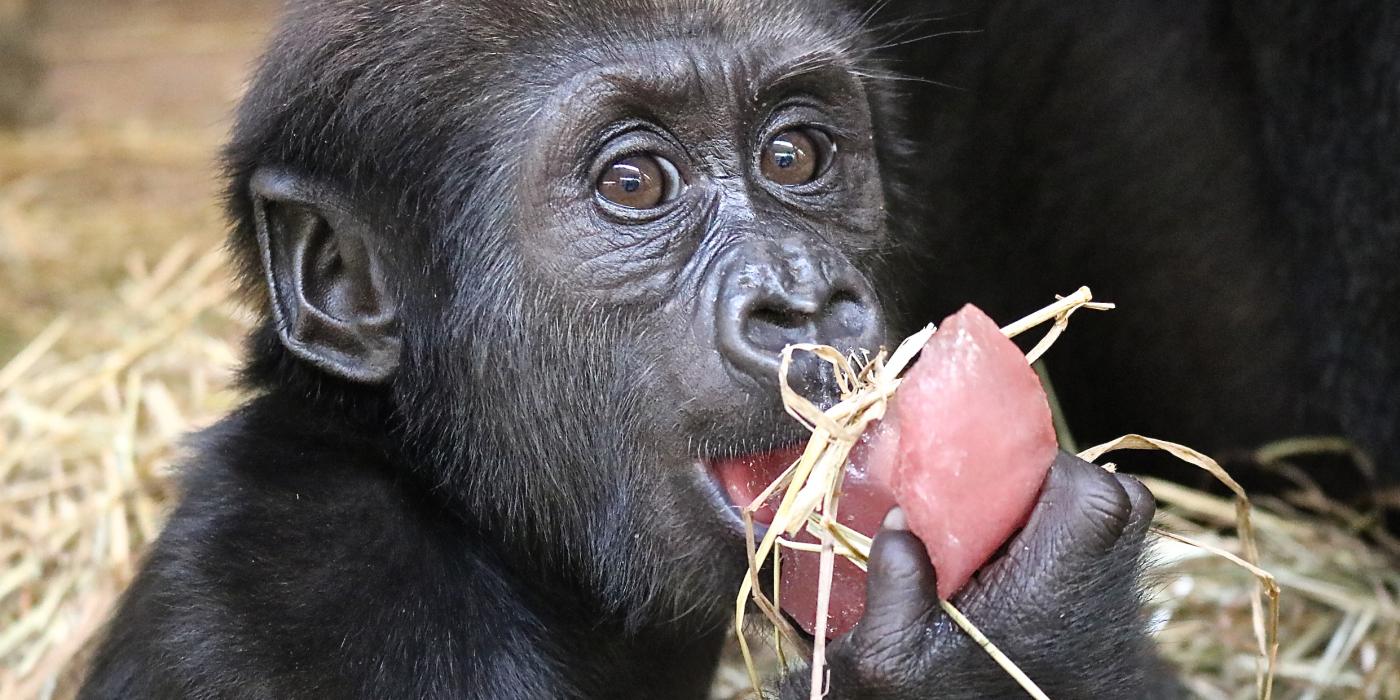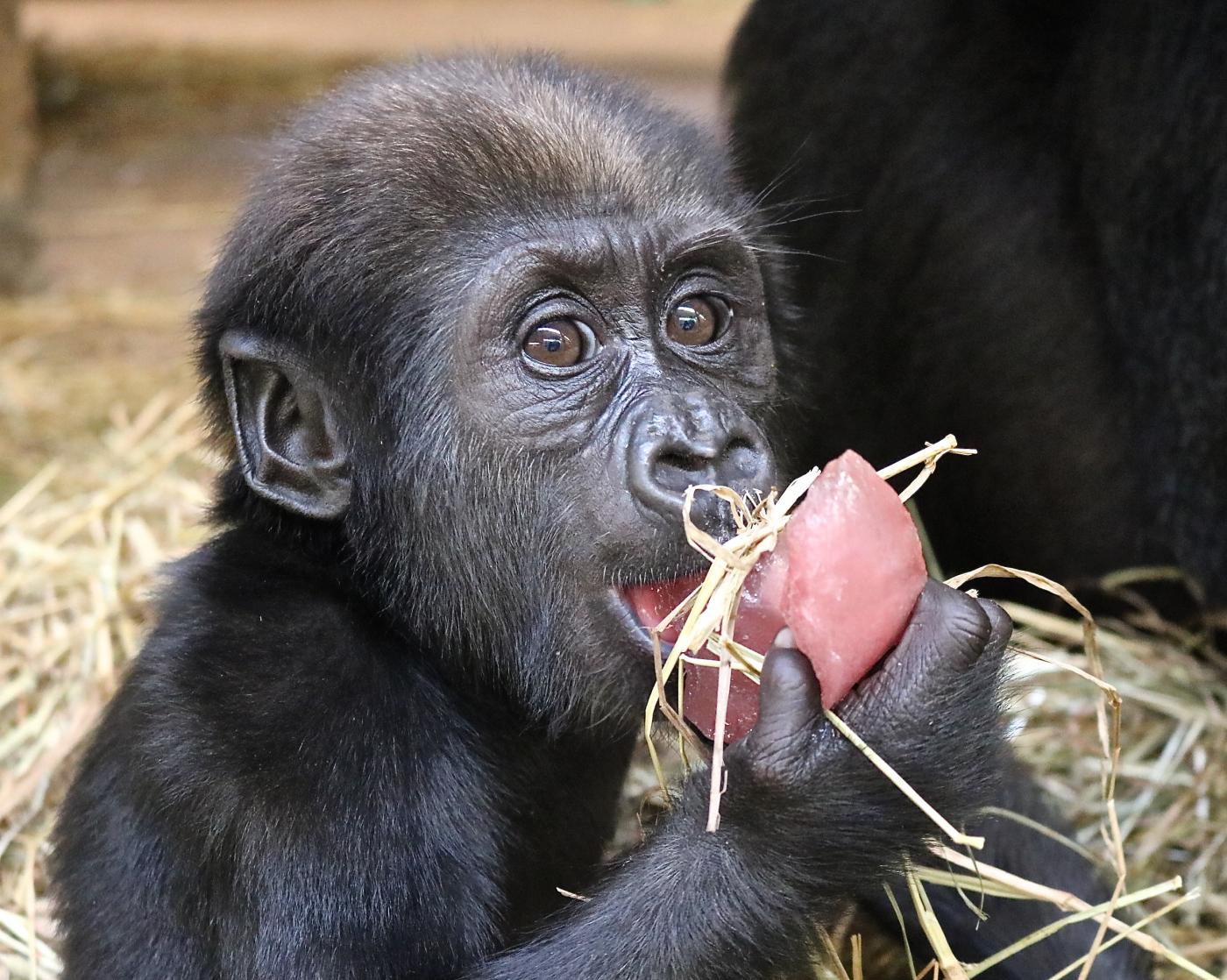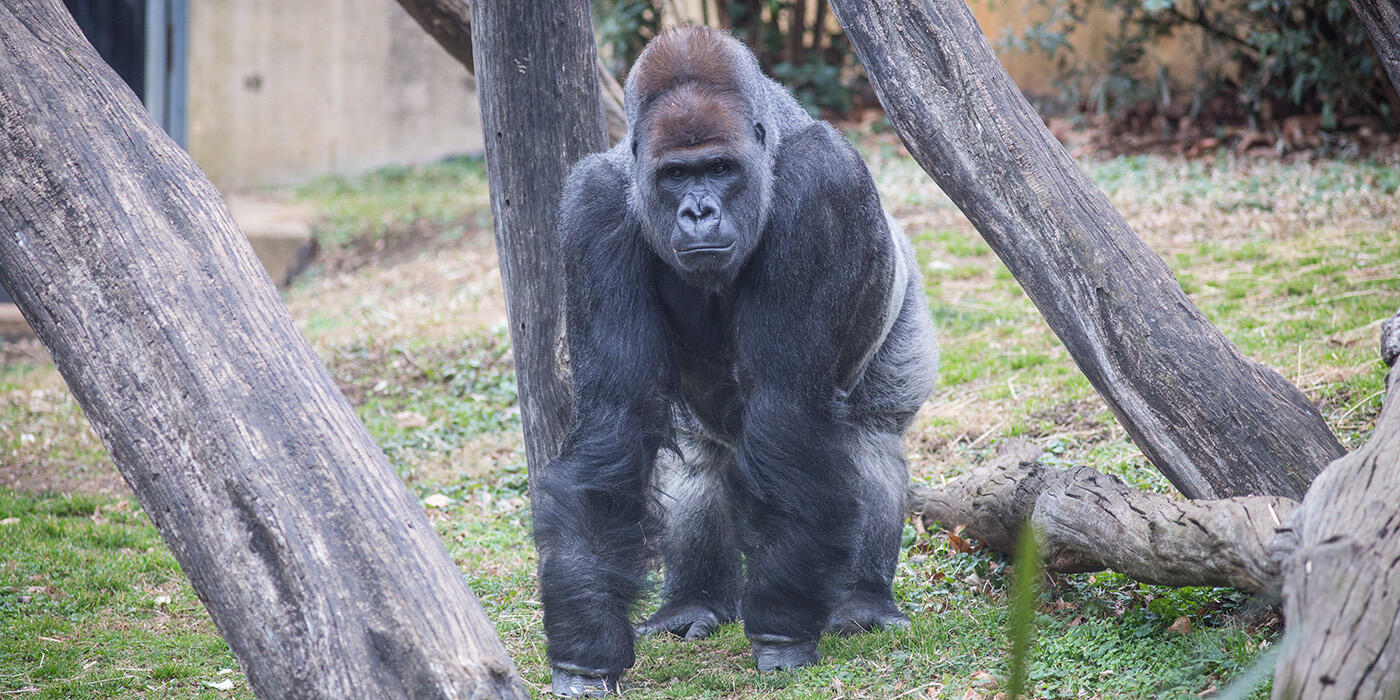#GorillaStory: School Starts for Moke

This update was written by primate keeper Melba Brown.
Last week, western lowland gorilla mother Calaya celebrated a big birthday: her sweet 16! On Aug. 30, the primate team threw Calaya and her troop—21-week-old Moke, Baraka, Mandara and Kibibi—a celebratory bash, the centerpiece of which was a colorful ice cake made by the talented team in our Department of Nutrition Sciences. Moke clearly enjoyed exploring the extra enrichment items scattered throughout the yard and sported a pink muzzle after indulging in some of the tasty treats.

The relationship between Calaya and Kibibi has taken a positive turn in the past week, and the tension between them seems to be decreasing. With Calaya’s approval, Kibibi and Moke have had several play bouts. Behaviorally, Kibibi has made a significant adjustment during these sessions to placate Calaya. She stretches out on the hay, thereby making herself smaller and submissive. When Moke walks to her, she plays with him in this low-lying position. This change demonstrates just how clever gorillas can be. Kibibi found a way to play with Moke and keep Calaya content.
Moke is teething, so I gave him a durable enrichment item to mouth: a Nylabone. Before he could get to it, Calaya took it and played with it while shaking her head back and forth. At one point, she tapped the bone on Moke’s head before positioning it between her hands and clapping multiple times. When she relinquished the toy, Moke was able to hold the bone and play with it. Not long after, Kibibi joined in on the fun.
Keepers at the Smithsonian’s National Zoo are experts in animal behavior, and one of my favorite activities is observing the gorillas and learning all I can about them. Gorilla group dynamics run the behavioral gamut!
Hints of the social hierarchy within the troop can be detected by observing displacement behavior, i.e. who causes others to ‘clear the deck’ upon approach. In our troop, Baraka is at the top, followed by Calaya, who quickly and dramatically established herself as the “queen gorilla” of the females. Mandara is next in line, and Kibibi follows behind her.
Zoo visitors who stay at the Great Ape House long enough have a good chance of seeing examples of displacement behavior in action. If the females are in one location and Baraka approaches, they may leave the immediate area. If Mandara and Kibibi are in a spot and Calaya approaches, the two may leave that area. Displacement behavior is more prevalent when there is some tension in the group.
From time to time, an interesting dynamic surfaces when Calaya is displaced by both Mandara and Kibibi. It is a rare occurrence, but it does happen. The Mandara and Kibibi alliance can be quite forceful. There have been times when they backed Baraka down!
Related Species:




